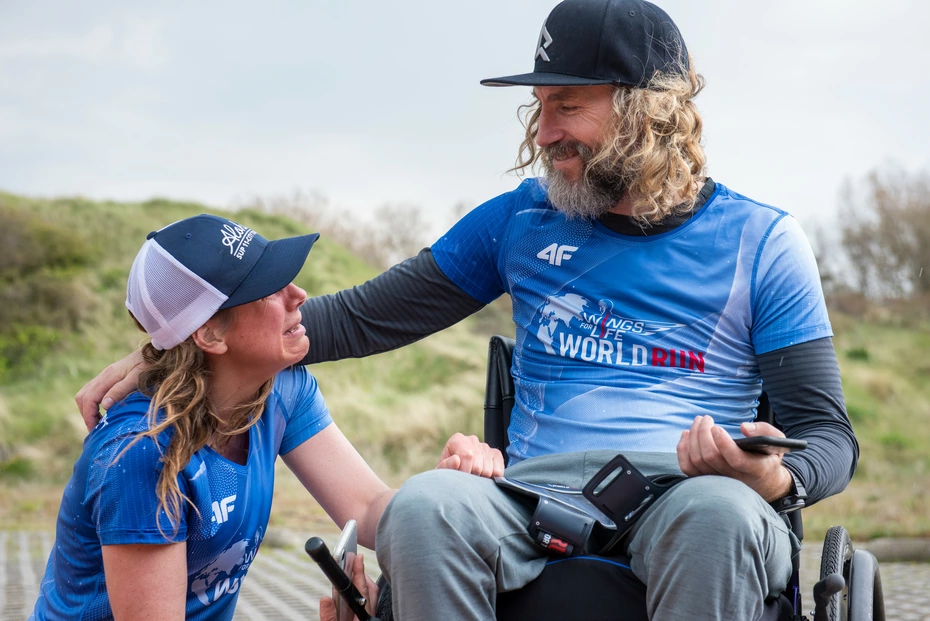Get to know inspirational photographer Ydwer van der Heide

Each Wings for Life World Run is packed with powerful moments, and in 2021, one moment that resonated was when Dutch photographer Ydwer van der Heide managed to cover 2 km in his wheelchair only three months after a spinal cord injury.
Ydwer is a leading action sports photographer, specializing in kiteboarding. He had photographed the Wings for Life World Run previously and was keen about the good cause. But it was on one otherwise normal Thursday in February 2021 that spinal cord injury became his own personal reality.
Ydwer was surf foiling when he was catapulted onto his head. He couldn’t move and was rushed to the hospital, where, after tense initial hours – a ventilator, surgery, frighteningly low blood pressure – he started to improve. But with a C6 incomplete spinal cord injury, his life was turned upside down.
Ydwer had some strength in his left arm, but his right arm was very weak, and he couldn’t move his hands and legs. “After about four weeks in rehab, I was able to move my big left toe, and not much longer after that I was able to put some tension in my upper left leg, and then it just started to build very slowly,” he describes. Today, he can push himself to a standing position, and 2022 he took his first steps outdoors with his walker exactly a year after his injury. But he must spend most of the day in a wheelchair, and his hands “don’t really work.”
Further, the challenges of spinal cord injury go far beyond what’s visible. Ydwer describes,
“Everything below your point of injury is not working, or not like regular. So, for example, going to the toilet, digesting food, your blood pressure, your temperature – and most of the time they’re way more intense than not being able to walk or use your hands.”
It was his girlfriend who asked if he wanted to participate in the Wings for Life World Run taking place barely three months after his accident. “I said yes straightaway, because I think it’s a very, very beautiful event,” Ydwer says. “It has a lot of impact, everybody can do it, and you can do it everywhere in the world, which I think is very unique.”

He continues, “I think it’s very good to create awareness. It is an insane thing that happens, where suddenly people’s lives are 180 degrees opposite from what they’re used to. If there’s any chance of finding a way to be more independent, then we should try and achieve it.”
Ydwer credits his own progress in part to maintaining a positive mindset. Instead of setting only one big goal, he sets smaller, “in-between” goals that he knows he can accomplish. He has started taking photos again, and while he doesn’t have the same dexterity, he’s feeling a new freedom to experiment. He’s even been working on a book of his all-time best photos, which will be shipping this summer.
And he’s looking forward to participating in the Wings for Life World Run again this year, with a new objective of walking 100 meters with his walker.
“My other goal is to motivate people to participate and try to get as much money as possible for research,” Ydwer says. “Even a small difference in improvement can be a huge thing for people with spinal cord injury. So the research is not only about being able to walk again, but about improving our lives just a little more. Every little bit makes a big difference.”